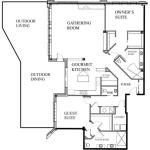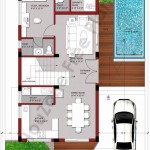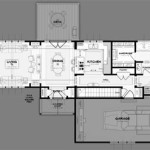Traditional New England Colonial House Plans
New England Colonial houses are a classic American architectural style that has been around for centuries. These homes are known for their simple, elegant lines, symmetrical facades, and large, central chimneys. If you're thinking about building a New England Colonial home, there are a few essential aspects to keep in mind.
Exterior Features
The exterior of a New England Colonial house is typically made of wood or brick. The roof is usually pitched and symmetrical, and the windows are often double-hung. The front door is usually centered on the facade, and it may be flanked by two or four columns. Other common exterior features include shutters, dentil molding, and a widow's walk.
Interior Features
The interior of a New England Colonial house is typically spacious and well-lit. The first floor usually consists of a living room, dining room, kitchen, and study. The second floor typically has bedrooms and bathrooms. The third floor may have additional bedrooms or a playroom. Some New England Colonial homes also have a basement, which can be used for storage or additional living space.
Floor Plan
The floor plan of a New England Colonial house is typically symmetrical. The front door opens into a central hall, which is flanked by the living room and dining room. The kitchen is usually located at the back of the house, and it may have a breakfast area or a pantry. The bedrooms are typically located on the second floor, and they may have en suite bathrooms. The third floor may have additional bedrooms or a playroom.
Building Materials
New England Colonial houses are typically made of wood or brick. Wood is the most common material, and it is often used for the exterior walls, roof, and windows. Brick is also a popular material, and it is often used for the foundation, chimneys, and walkways. Other materials that may be used in the construction of a New England Colonial home include stone, slate, and shingles.
Historical Significance
New England Colonial houses are a significant part of American history. These homes were built by the early settlers of New England, and they reflect the values and lifestyle of that time. Many New England Colonial homes are still standing today, and they continue to be admired for their beauty and historical significance.
Modern Adaptations
While New England Colonial houses are traditionally built with wood or brick, modern adaptations of this style may use other materials, such as vinyl or fiber cement. These materials can provide a more affordable and durable option for homeowners. Additionally, modern New England Colonial homes may have updated floor plans and amenities, such as open kitchens and master suites. Despite these changes, the essential elements of the New England Colonial style remain the same.

New England Colonial House Plans Monster

Colonial Early New England Homes

Colonial House Plans The Plan

Colonial House Plans Dutch Modern More Monster

Saltbox Early New England Homes

Colonial House Plans Floor Modern Thd

Colonial House Plans Southern Floor

Colonial House Plan 3 Bedrms Baths 2526 Sq Ft 146 1990

Defining Characteristics Of Colonial Architecture Vanderhorn Architects

Colonial House Plans Southern Floor








